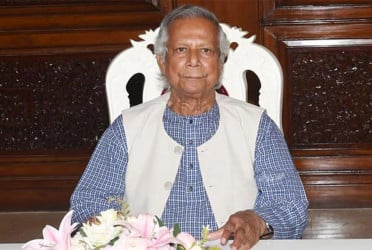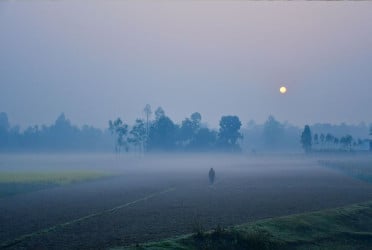The extreme heatwave has been going on over many areas of the country including the capital for some days. This heatwave is creating extreme hot weather like what we see in the desert regions in the world. As a result, those who’re getting outside the homes are being suffered from body scratching. In addition, their lips are getting dried and cracked. This is occurring due to the lack of water vapor in the air.
The experts think the global warming and climate change are the reasons behind it. They are also marking the excessive greenhouse gases emissions in the neighboring countries as the reason behind the heatwave in the country, along with cutting the trees, filling up the rivers, air pollution and lack of open spaces.
The climate specialists said if proper steps are not taken to prevent climate change and global warming, the summer of 30 years from now will experience average temperature rise of 3 to 4 degree Celsius. And the highest temperature of a year could reach up to 46 degree.
According to the estimation of governmental research agency Center for Environment and Geographic Information, from 1961 to 1990, each year saw an increase in temperature of 0.0067 degree, and from 1991 to 2000 it was 0.39 degree. From 2001 to 2010, it was 0.53 degree, while from 2011 to 2019, it was 1.06 degree. This estimation undoubtedly expressed the reality of ever-rising temperature.
Under the initiative of Curtin University of Australia, six researchers of Calgari University of Canada and Bangladesh, conducted research on the temperature of five cities of the country— Dhaka, Chattogram, Rajshahi, Khulna and Sylhet. The found that whereas the temperature is kept 1.5 degree less than the average in the world, it was increased by 3 degree in Dhaka in last 20 years.
The researches depicted the population explosion, unplanned urbanization, feeling up the water-bodies, and cutting up the tress as the reasons behind rising temperature in Dhaka. According to the research, the cities including Dhaka are being turning into ‘Heat Island!” The temperature outside these islands is less than that of the islands, as these islands remain hot 24 hours. Furthermore, the average temperature of the country in last three decades was greater than the previous three decades. This information was revealed in the Bangladesh National Adaptation Plan that was published on the occasion of Cop27, the climate conference of United Nations.
Professor Dr. Md. Zillur Rahman, Chairman of Department of Disaster Science and Management of University of Dhaka, told The Bangladesh Pratidin, 'When we see that the temperature is increasing for a long time, we have to assume that it is due to climate change. Normally, the temperature does not rise above 25 degrees Celsius in Vancouver, Canada. But recently we have seen that the temperature has gone up to 48 degree Celsius during summer. This is clearly a result of climate change. I think climate change is responsible for the current heat wave in the country. And man-made factors such as tree cutting and river encroachment are also behind this natural problem.
M. Shafiq-ur Rahman, Professor of Urban and Regional Planning Department of Jahangirnagar University, told The Bangladesh Pratidin, "The rising temperature in the country is the result of global warming and climate change. It is also scientifically proven. Although the temperature in our country is 41 or 40 degrees Celsius, it feels 2 to 3 degrees Celsius more. And the main reason for this is the decrease in the number of trees in urban areas and the filling of water bodies. If there were lots of open spaces, parks, water bodies and green spaces in Dhaka then this excessive heat would not have been felt. The number of concretes has increased in urban areas. But the presence of greenery and water bodies has decreased. And if there were more of them, we wouldn't have the suffering we're experiencing as a result of rising temperatures. A lot of trees should be planted in the city. The number of open spaces and fields should be increased. In the last five decades, we could not build two more parks like Suhrawardy and Ramana Park. Ghazari Forest which was next to Dhaka, has also decreased to its territory. I’ll say the water-bodies that have been depleted must be restored. Care should be taken to ensure that the existing reservoirs are not filled. Trees can be planted along Dhaka roads and between dividers. In summer, when the buildings on the side of the road seems to feel high temperature, it will not feel so hot if there’s lots of trees in the city.”
@The report was published in Bengali on print and online versions of The Bangladesh Pratidin on April 17 and rewritten in English by Lutful Hoque



































































